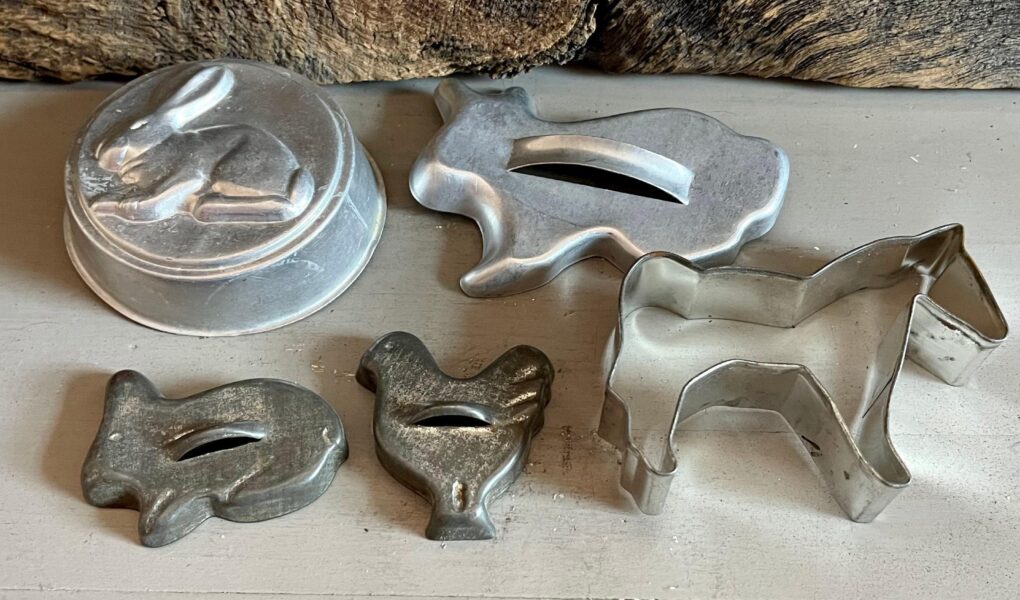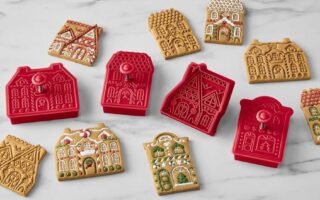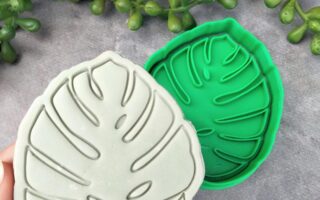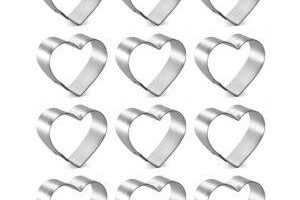In the charming realm of baking, where the sweet scent of cookies dances through the air, vintage cookie cutters hold a special place of nostalgia and creativity. These delightful tools, often adorned with intricate designs and whimsical shapes, not only serve a practical purpose but also tell stories of the past. From charming holiday themes to classic shapes reminiscent of simpler times, vintage cookie cutters invite bakers to explore their culinary artistry while honoring traditions that have transcended generations. As we delve into the world of these treasured artifacts, we uncover the history, craftsmanship, and enduring appeal that make vintage cookie cutters a beloved staple in both kitchens and hearts alike. Whether you’re a seasoned baker or an enthusiastic novice, join us on a journey through time, where each cut of dough reveals a sweet slice of history.
Table of Contents
- The Timeless Charm of Vintage Cookie Cutters
- Choosing the Right Material for Longevity and Performance
- Caring for Your Vintage Cookie Cutters: Tips and Best Practices
- Incorporating Vintage Designs into Modern Baking Creations
- Q&A
- Closing Remarks
The Timeless Charm of Vintage Cookie Cutters
There’s a certain magic in the patina of age that vintage cookie cutters bring to the kitchen. Each one carries a story, often revealed through its distinctive shape and intricate design. These charming tools can be found in various styles, from nostalgic seasonal shapes to whimsical figures that spark joy in anyone who catches a glimpse of them. Many vintage cookie cutters are crafted from materials like tin or aluminum, and their subtle imperfections add character, making every baking session feel like a delightful journey into the past.
When happily rummaging through flea markets or antique shops, you might encounter an array of these precious creations, such as:
- Classic Holiday Shapes: Christmas trees, snowflakes, and pumpkins that enhance holiday festivities.
- Childhood Favorites: Dinosaurs, stars, and teddy bears that evoke cherished memories.
- Floral and Nature Motifs: Beautiful flowers and leaves that bring a touch of the outdoors inside.
Not only do vintage cookie cutters elevate the baking experience, but they can also serve as beautiful decorative pieces when displayed in your kitchen. Their intricate forms and historical significance make them a perfect conversation starter, inviting a sense of nostalgia and warmth into your home.
Choosing the Right Material for Longevity and Performance
When selecting vintage cookie cutters, consider the materials that will best endure the test of time while delivering optimal performance in your baking endeavors. Stainless steel is one of the most favored materials due to its durability and resistance to rust, which allows for consistent use over years. It generally maintains a sharp edge, resulting in clean cuts and beautifully shaped cookies. Copper cutters, although they require more maintenance to prevent tarnishing, offer a classic feel and can create intricate designs. Each material brings its own unique aesthetic to your collections, enhancing not only functionality but also the nostalgic charm of baking.
In addition to the primary material, the thickness and design of cookie cutters greatly influence their performance. Options such as plastic might be lighter and easier to manipulate, but they can warp over time and may not produce the same precision in cutting. A mindful approach should also be taken towards silicone, which allows for easy release but might not hold the shape as favorably as firmer materials when baking essential figures. Here’s a quick comparison of common materials used in vintage cookie cutters:
| Material | Longevity | Performance |
|---|---|---|
| Stainless Steel | High | Excellent |
| Copper | Medium to High | Very Good |
| Plastic | Low to Medium | Good |
| Silicone | Medium | Acceptable |
Caring for Your Vintage Cookie Cutters: Tips and Best Practices
Keeping your vintage cookie cutters in prime condition requires a gentle yet systematic approach. Always wash them by hand using mild soap and warm water to avoid damaging the original finish. Steer clear of abrasive scrubbers as they can scratch the metal surface, leading to rust or tarnish. Dry thoroughly after washing to eliminate any lingering moisture that can cause corrosion. Storing these cherished tools properly is also paramount; consider placing them in a soft cloth or a dedicated container where they won’t clang against each other, risking dents that could diminish their charm.
For those looking to restore or maintain the brilliance of their vintage cookie cutters, consider the following practices: Periodically polish with a metal polish designed for kitchenware to maintain their shine, taking care not to use it on painted or decorative surfaces. If any rust spots appear, a gentle rub with a fine steel wool or a vinegar-soaked cloth can help remove tarnish without compromising the integrity of the design. To ensure their longevity, keep them in a cool, dry place away from direct sunlight, which can fade any painted finishes. Here’s a quick reference table summarizing care tips:
| Care Task | Recommended Method |
|---|---|
| Washing | Hand wash with mild soap and warm water |
| Drying | Thoroughly dry with a soft cloth |
| Polishing | Use kitchenware metal polish |
| Rust Removal | Fine steel wool or vinegar cloth |
| Storage | Keep in a soft cloth or container |
Incorporating Vintage Designs into Modern Baking Creations
In today’s baking scene, vintage cookie cutters serve as delightful tools to bridge the gap between the nostalgic and the contemporary. These charming implements not only evoke memories of childhood baking sessions but also add a whimsical touch to modern treats. The intricate designs featured in vintage cookie cutters can inspire bakers to create stunning cookies that are both visually captivating and delicious. These cutters often come in a variety of shapes, including classic holiday motifs, charming animals, and playful geometric forms, encouraging bakers to think outside the traditional cookie box.
To seamlessly integrate these retro designs into your baking, consider experimenting with different doughs and icing techniques that complement the vintage aesthetic. You can use royal icing for intricate detailing or fondant to create dimensional elements that enhance the classic shapes. Here are a few ideas to elevate your creations:
- Choose a cohesive color palette to reflect the vintage theme, such as pastel shades or classic black and white.
- Incorporate embellishments like edible glitter or luster dust to add a modern twist to the timeless designs.
- Create custom gift boxes to present these cookies beautifully, reinforcing their charming vintage appeal.
| Vintage Design | Modern Twist |
|---|---|
| Classic Star | Glittered royal icing with silver detailing |
| Floral Shape | Pastel fondant accents with edible flowers |
| Holiday Tree | Layered colors with a candy cane drizzle |
Q&A
Q&A: All About Vintage Cookie Cutters
Q: What exactly are vintage cookie cutters and what makes them different from modern ones?
A: Vintage cookie cutters are baking tools from the past, typically made from metal, wood, or sometimes plastic, that feature unique and often intricate designs. Unlike their modern counterparts, which often prioritize functionality and mass production, vintage cookie cutters showcase a blend of craftsmanship and artistic flair, reflecting the design trends of their time.
Q: How can I identify a vintage cookie cutter?
A: To determine if a cookie cutter is vintage, look for signs such as rust, wear, and unique printing or stamping that may indicate its age. Many vintage cutters feature distinctive shapes or designs that are no longer popular today, such as detailed animal figures or whimsical holiday motifs. Additionally, research brand names or markings, as certain manufacturers are known for their vintage pieces.
Q: Where can I find vintage cookie cutters?
A: Vintage cookie cutters can often be found at estate sales, antique shops, flea markets, and online marketplaces like eBay or Etsy. Specialty kitchenware stores that focus on retro items may also carry a selection of vintage cutters. Keep an eye out for local collector groups or community events where vintage baking tools might be showcased.
Q: Are vintage cookie cutters safe to use?
A: Most vintage cookie cutters can be safe to use, but it’s essential to evaluate their condition first. Check for rust, sharp edges, or any coatings that may not be food-safe. If you plan to use a vintage cookie cutter, it’s a good idea to clean it thoroughly beforehand and consider applying a food-safe coating if necessary.
Q: What are some popular shapes or themes in vintage cookie cutters?
A: Vintage cookie cutters come in a delightful variety of shapes and themes, including holiday characters (like Santas and pumpkins), animals (such as kittens and bunnies), flowers, and simple geometric shapes. Many from the mid-20th century also feature charming illustrations, ideal for adding a nostalgic touch to any cookie platter.
Q: Can I collect vintage cookie cutters as a hobby?
A: Absolutely! Collecting vintage cookie cutters can be a fun and fulfilling hobby. Many collectors seek out specific themes, like holiday designs or animal shapes, while others focus on particular brands or eras. It’s a great way to explore history through kitchenware and share your collection with fellow enthusiasts or at baking events.
Q: What are some tips for cleaning and maintaining vintage cookie cutters?
A: To clean vintage cookie cutters, avoid harsh chemicals that may damage the material. Instead, wash them with warm soapy water and a soft cloth. If rust is present, gentle scrubbing with baking soda or vinegar can help remove it. After cleaning, dry thoroughly and store cutouts in a cool, dry place, ideally in a cloth or wood container to prevent scratches and maintain their shape.
Q: How can I incorporate vintage cookie cutters into modern baking?
A: Vintage cookie cutters can add a unique flair to today’s baking. Use them for holiday cookies, special occasions, or even as decorative elements for cakes and pastries. Consider using different doughs or introducing colored icing to modernize the look while retaining the antique charm. You can also use them for crafting projects, creating fun shapes with dough, or even in playdough for children!
Q: Are vintage cookie cutters a good investment?
A: Vintage cookie cutters can be a good investment, as unique or rare designs often appreciate in value over time. However, like any collectible, the market can fluctuate. It’s important to collect what you love, as personal enjoyment is often the best return on investment. If you find a vintage cookie cutter that speaks to you, it’s sure to be a worthwhile addition to your kitchen.
Closing Remarks
As we close our exploration of vintage cookie cutters, we can’t help but appreciate the stories and nostalgia each piece carries. These timeless tools, with their charming shapes and intricate designs, invite us not only to bake but also to connect with our culinary heritage. Whether you’re a seasoned baker or just starting your journey in the kitchen, incorporating vintage cookie cutters into your baking routine can add a delightful touch of whimsy and tradition. As you sift through flea markets or browse antique shops, may you uncover treasures that inspire creativity and warm the hearts of those who gather around your table. So, let your imagination rise and your cookies take shape, as you embark on a flavorful adventure steeped in history and sweetness. Happy baking!



